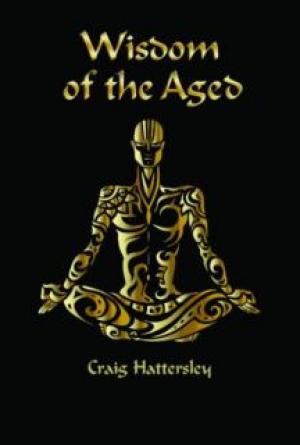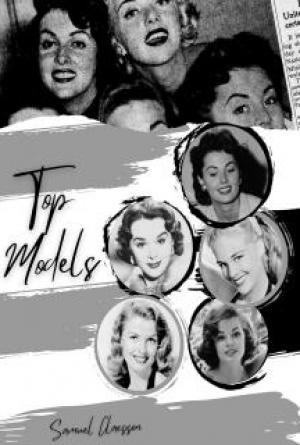FOOTNOTES
1 Note that the two families spelled the same name differently.
2 Owned years afterward by Orville Wright.
3 First published in Flying.
4 Orville had arranged the camera on a tripod pointing to where he hoped the machine would be after leaving the track. The negative was developed by Orville after his return to Dayton.
5 The Wrights carried 70 pounds of iron bars in many of the flights of 1904-’05, and could fly with less power than if that load had not been carried. Here is the explanation: The center of gravity of their machine was so far back of the center of pressure on the wings that an air pressure of 70 pounds was required on the top side of the horizontal elevator in front, to make the center of lift and center of gravity coincide. Any downward pressure on the elevator, the brothers reasoned, regardless of whether produced by the air or by a weight, would have to be supported by the main planes. But if the downward pressure is obtained by use of the elevator, then two drags are created, one on the elevator itself, and the other on the wings, in consequence of carrying that extra pressure on the elevator. On the other hand, an equal downward pressure produced by a weight, carried at the same distance as the elevator in front of the wings, would add little to the drag on the elevator, because it would dispose of the necessity for a downward pressure on that part of the machine, and there would then be only the drag on the wings.
6 All italics used in letters quoted in this chapter are supplied.
7 Dienstbach was still a resident of New York in 1943.
8 When the airplane was first considered for military purposes, the Wrights thought the plane could be such a destructive instrument in warfare that no nation, no government, would risk subjecting people to the terrors it could create. Another reason why the brothers thought the machine might prevent war was the possibility that it could be used against those persons chiefly responsible for bringing on a war. That is, if one nation started an attack against another, with or without a declaration of war, the nation attacked could drop bombs on, say, assembled members of the legislature, or the buildings housing the highest officials of the aggressor country. That possibility, it was hoped, would deter any nation from taking warlike steps.
9 Though there was no agreement in regard to the altitude at which the machine would fly, the Wrights were willing to guarantee 1,000 feet, and said that so far as the machine itself was concerned it could be flown at an altitude of a mile. One of the Germans remarked that half a mile from the ground should be enough, as no gun in existence would be likely to hit so swiftly moving a target at that height.
10 Afterward a major general.
11 The Wright monument on top of Kill Devil Hill, ordered by act of Congress and dedicated in November, 1932, is probably the most impressive memorial ever built anywhere in the world to do honor to anyone still living. Reaching sixty-one feet above Kill Devil Hill, with a powerful beacon light at its top, it may be seen for miles. About the four sides of the base reads a legend: In Commemoration of the Conquest of the Air by The Brothers Wilbur and Orville Wright, Conceived by Genius, Achieved by Dauntless Resolution and Unconquerable Faith.
“Anchoring” the once shifting sands of Kill Devil Hill by ingenious planting of suitable grasses and shrubbery provides a memorial in itself, as is the national park of three hundred acres that includes the hill.
12 A Wright monument at Le Mans, by the sculptor, Paul Landowski, was dedicated in 1920.
13 A Wright monument at Pau was dedicated in 1931.
14 From Wright Hill, near Dayton, on which there is a memorial monument, one has a view of the great government aviation center of Wright and Patterson fields, the latter of which includes the Huffman tract. The monument bears the legend: “In Commemoration of the Courage, Perseverance and Achievements of Wilbur and Orville Wright. Through Original Research the Wright Brothers Acquired Scientific Knowledge and Developed Theories of Aerodynamics which with their Invention of Aileron Control Enabled Them in 1903 to Build and Fly at Kitty Hawk the First Power-Driven, Man-Carrying Aeroplane Capable of Flight. Their Further Development of the Aeroplane Gave it a Capacity for Service which Established Aviation as one of the Great Forward Steps in Human Progress. As Scientists Wilbur and Orville Wright Discovered the Secret of Flight. As Inventors, Builders and Flyers, they Brought Aviation to the World.”
15 Bishop Wright lived to be nearly 89.
16 The italics in all letters quoted in this chapter are supplied.
17 A still later plane, the one sold by the Wrights to the United States Government in 1909, was afterward given to the Smithsonian by the War Department, and it was placed on exhibition. It was wrongly labeled as the 1908 plane.
18 For an account of early Langley and Wright aeronautical investigations, see Smithsonian Report for 1900 and The Century Magazine of September 1908.
19 Smithsonian Reports: 1914, pp. 9, 219, 221, 222; 1915, pp. 14, 121; 1917, p. 4; 1918, pp. 3, 28, 114, 166. Report of U. S. National Museum, 1914, pp. 46 and 47.







